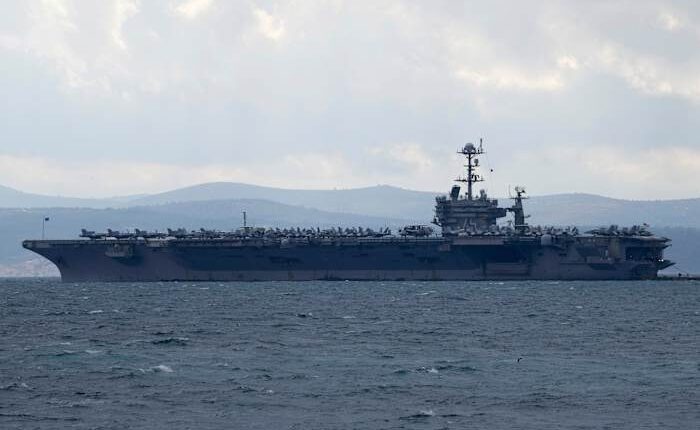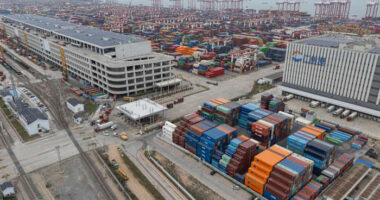
The USS Harry S. Truman aircraft carrier has been instructed by Defense Secretary Pete Hegseth to stay in the Middle East for an additional week. This decision is aimed at maintaining two carrier strike groups in the region to combat the Yemen-based Houthi rebels.
Hegseth previously prolonged the Truman’s deployment, along with the warships in its group, by a month at the end of March, with the goal of escalating strikes against the Iran-backed Houthis. The recent order was signed by Hegseth on Thursday, and it is anticipated that the Truman and its accompanying strike group will return to Norfolk, Virginia, once the week is over.
General Erik Kurilla, who heads U.S. Central Command, made a request for the extension of the Truman, as confirmed by officials. Meanwhile, the San Diego-based USS Carl Vinson aircraft carrier and its strike group have recently arrived in the region and are currently operating in the Gulf of Aden. On the other hand, the Truman, accompanied by two destroyers and a cruiser from its strike group, is positioned in the Red Sea.
The officials spoke Friday the condition of anonymity to discuss military operations.
The U.S. has increased its attacks on the Houthis, launching daily strikes since March 15, when President Donald Trump ordered a new, expanded campaign. He promised to use “overwhelming lethal force” until the Houthis stop their attacks on shipping in the Red Sea, a vital trade corridor.
According to Central Command, the U.S. has been waging an “intense and sustained campaign” against the Houthis. In a statement over the weekend, the command said the U.S. has struck more than 1,000 targets in Yemen since Operation Rough Rider began. It hasn’t provided details on the targets or how the data is compiled.
It has been rare in recent years for the U.S. to have two aircraft carriers in the Middle East at the same time. Navy leaders have generally been opposed to the idea because it disrupts ship maintenance schedules and delays time at home for sailors strained by the unusually high combat tempo.
If there are no additional extensions and the Truman and its warships leave the region next week, those sailors could be back home by next month.
Last year, the Biden administration ordered the USS Dwight D. Eisenhower aircraft carrier to remain in the Red Sea for an extended time as U.S. warships waged the most intense running sea battle since World War II. Prior to that, it had been years since the U.S. had committed that much warship power to the Middle East.
The Houthis had been waging persistent missile and drone attacks against commercial and military ships in the region in what the group’s leadership has described as an effort to end Israel’s war against Hamas in the Gaza Strip.
From November 2023 until this January, the Houthis targeted more than 100 merchant vessels with missiles and drones, sinking two of them and killing four sailors. That has greatly reduced the flow of trade through the Red Sea corridor, which typically sees $1 trillion of goods move through it annually.
The group paused attacks in a self-imposed ceasefire until the U.S. launched a broad assault against the rebels in mid-March.
Copyright 2025 The Associated Press. All rights reserved. This material may not be published, broadcast, rewritten or redistributed without permission.

















